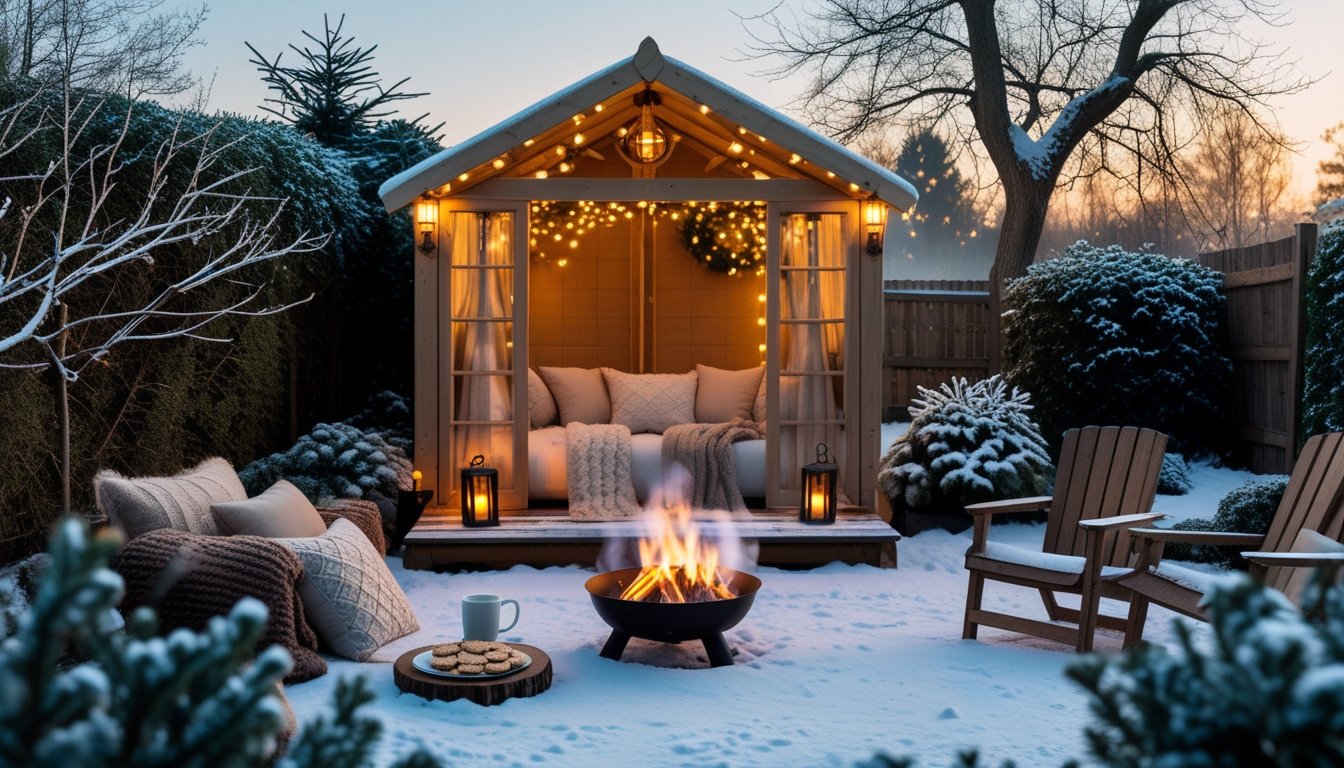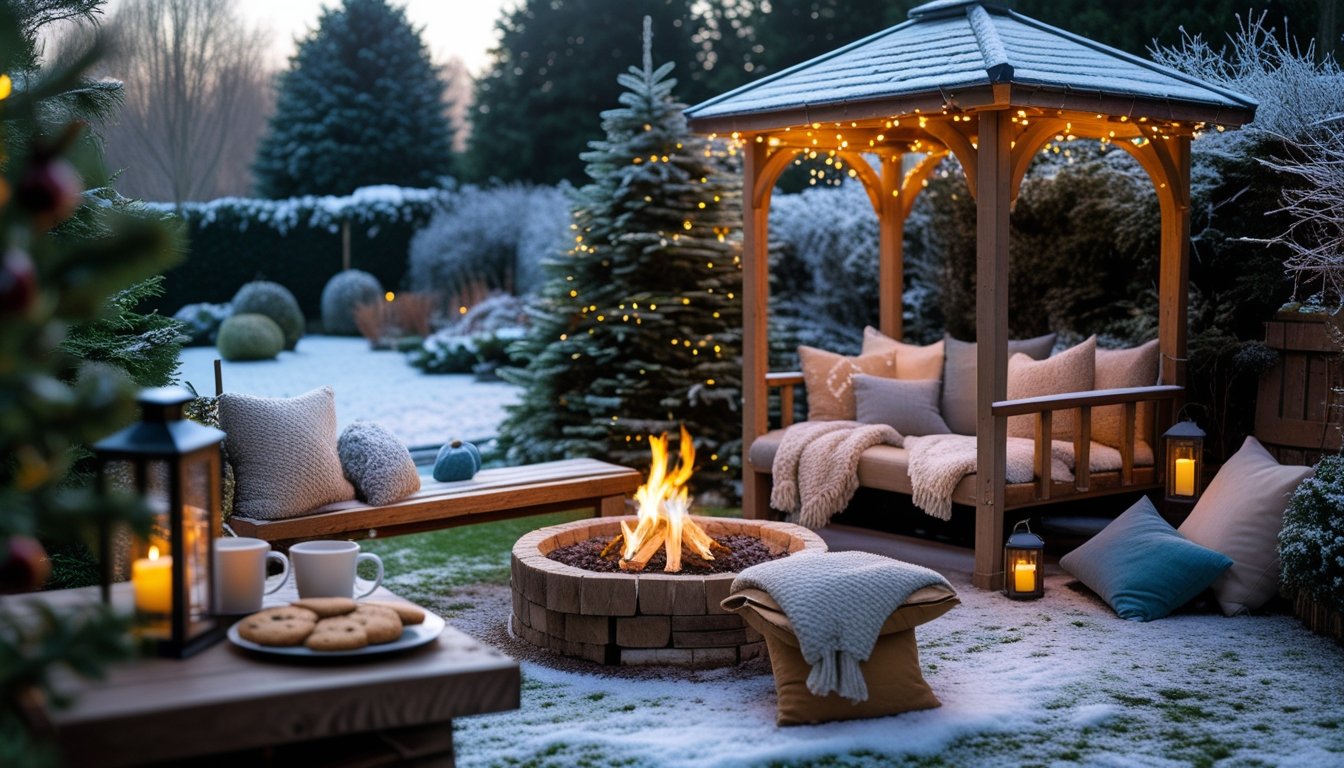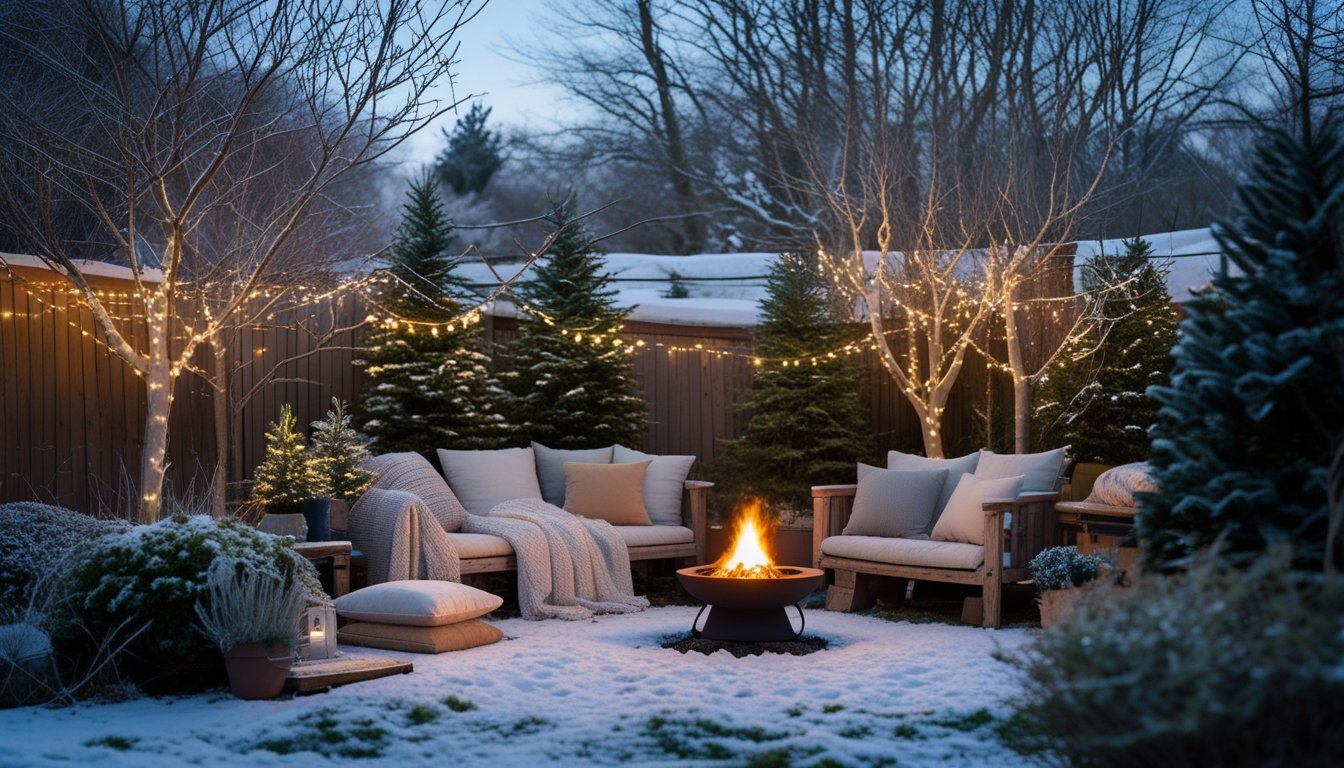Late updated: 06 Jul 2025 10:07
Written by: James Whitaker
Creating A Cosy Winter Retreat In Your Garden: Top Tips for a Warm Outdoor Haven
The onset of winter often pushes us indoors, but with a touch of creativity, our gardens can become a magical haven during the colder months. By integrating elements such as warm lighting, comfortable seating, and winter-friendly plants, we can transform our gardens into cosy winter retreats that beckon even in chillier weather. Imagine sitting in your garden, enveloped in the gentle glow of string lights, while warming yourself by a fire pit and sipping on a hot beverage. This winter paradise is achievable with some thoughtful planning and creativity.

Many of us overlook the potential of our gardens in the winter, but with strategic design, they can provide just as much joy as in the summer months. Incorporating weather-resistant textiles, frost-resistant plants, and protective structures can make a world of difference. The key is to balance aesthetics with functionality, ensuring the space not only looks inviting but also serves our comfort and enjoyment.
As we explore the possibilities for crafting a winter retreat right in our backyards, we'll dive into essential features, smart planting options, and tips on safeguarding against the elements. These simple yet effective strategies will help us make the most of our outdoor spaces even when temperatures drop.
Key Takeaways
- Embrace design elements to maintain comfort and warmth.
- Choose plants that thrive in low temperatures.
- Use décor and structure for weather protection.
Essential Features for a Cosy Winter Retreat

Creating a cosy winter garden retreat requires careful planning and the inclusion of key elements. Essential features include designing a sheltered outdoor living space, introducing warmth through fire pits, and enhancing ambience with thoughtful lighting. Each aspect contributes to a space that's both inviting and warm.
Designing a Sheltered Outdoor Living Space
A winter garden must offer shelter from wind and precipitation. Pergolas are an excellent choice, providing a robust framework for cover. Adding a transparent roof or canvas can further shield from rain while allowing natural light.
Windbreaks are also crucial. Strategically placed screens or tall plants can deflect harsh winter winds, ensuring a more comfortable space. Protective features can blend seamlessly into your garden design, enhancing aesthetics while serving a functional purpose.
Creating Warmth with Fire Pits and Heating
A key to enjoying a winter patio is maintaining warmth. A fire pit serves both as a heat source and a captivating centrepiece. Various styles are available, from traditional wood-burning to modern gas-powered options, offering flexibility to suit any garden design.
Supplement fire pits with heaters for added warmth. Wall-mounted or freestanding heaters can efficiently warm specific areas, ensuring every corner of the outdoor living space remains cosy. It's essential to position heating elements safely and in strategic locations for maximum effect.
Lighting Up Your Winter Garden: Lanterns and String Lights
Lighting transforms a winter garden into a magical retreat. Lanterns provide a rustic charm and can be placed around seating areas and paths. For a touch of whimsy, include twinkling string lights; they create an enchanting atmosphere and highlight garden features even on the darkest nights.
Incorporate solar-powered options where possible to save energy and reduce maintenance. Flexible lighting solutions allow us to modify the ambience easily, adapting to both casual and festive occasions.
Incorporating Comfortable Outdoor Seating and Accessories
Comfort is paramount in a cosy winter setting. Investing in durable, weather-resistant outdoor seating ensures that furniture withstands the elements. Cushions and throws, preferably made from waterproof materials, can add layers of warmth and style.
Outdoor rugs ground the space, providing a soft texture underfoot and visually tying together seating arrangements. These elements, in conjunction with accessories like accent tables and planters, complete the inviting atmosphere, making it a place we’ll want to enjoy throughout the chillier months.
Winter-Friendly Planting and Weather Protection
Ensuring our garden thrives in the winter involves selecting hardy plants and providing shelter from harsh weather. Focusing on evergreens, decorative shrubs, and effective windbreaks creates a stunning and resilient winter garden.
Choosing Evergreens and Year-Round Interest Plants
Evergreens are crucial for maintaining greenery during colder months. Boxwood, junipers, and yews are excellent choices due to their ability to withstand frosty conditions. These plants offer both structure and a constant lush appearance. Adding plants with unique textures or variegated foliage can also contribute to visual interest year-round.
Incorporating plants like holly with its bright red berries, can add a splash of colour to an otherwise muted landscape. Choosing a mix of evergreens ensures a vibrant and inviting garden throughout the winter.
Integrating Decorative Shrubs and Seasonal Foliage
Decorative shrubs serve as focal points and help maintain an element of colour and texture. Species such as witch hazel or red twig dogwood provide striking visual elements even after shedding their leaves. They can brighten up any winter garden with their distinctive bark or early blooming flowers.
Pair these shrubs with plants that have winter-interest foliage. These can include varieties like heather or ornamental grasses that retain their shapes and colours well into the colder months. This approach creates a layered aesthetic that is pleasing to the eye.
Installing Effective Windbreaks for Shelter
Protection from harsh winds is essential for plant survival. Windbreaks can be natural, such as rows of trees or tall shrubs like privet, or artificial, like fences or screens. These barriers help reduce wind speed, thereby creating a microclimate that supports plant health.
Strategically placing windbreaks can also prevent soil erosion and protect against the desiccating effects of cold wind. By thoughtfully positioning these elements, we shield our plants from damage and preserve their vitality through the winter, ensuring a robust garden come spring.
Frequently Asked Questions

Designing a winter retreat in your garden involves insulating spaces, selecting winter-friendly plants, and incorporating decor to create a cosy atmosphere. Here, we explore common queries to make an inviting outdoor space during the colder months.
How can one effectively insulate a patio area for the winter months?
Insulating a patio can be achieved through installing windbreaks or clear PVC curtains. Weatherproof rugs add warmth underfoot, while thick outdoor curtains can block out the cold.
What are the best plants to cultivate on a patio during colder weather?
Evergreens like boxwood and hardy winter pansies thrive in colder weather. They maintain their greenery and offer visual appeal throughout the winter months.
What are the essential elements in designing a winter-proof outdoor space?
Key elements include weather-resistant furniture, heat sources like fire pits, and wind barriers. Lighting also plays a crucial role, with solar or LED lights enhancing safety and ambience.
How can you adapt your balcony to be a comfortable space in the winter?
Incorporate insulated flooring options and heavy blankets for seating areas. Adding a small heater helps maintain warmth, making the space inviting despite the chill.
What decor elements are ideal for creating a warm and inviting winter garden atmosphere?
Elements such as lanterns, fairy lights, and seasonal wreaths add charm. Natural materials like wood and stone, combined with soft textiles, enhance comfort and warmth.
Are there any temporary solutions for enclosing a garden area during the winter?
Temporary solutions include gazebo tents or pop-up greenhouses. These structures offer protection from harsh elements and can be easily removed when not needed.
